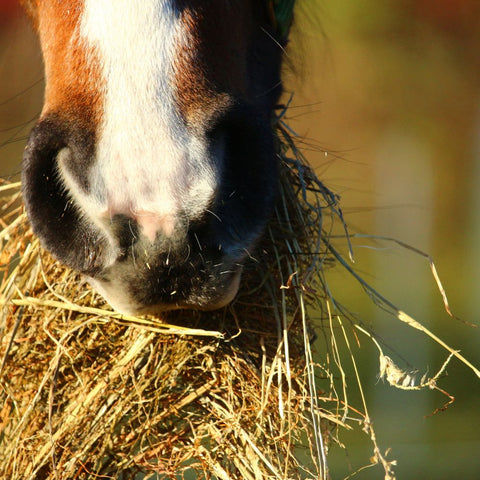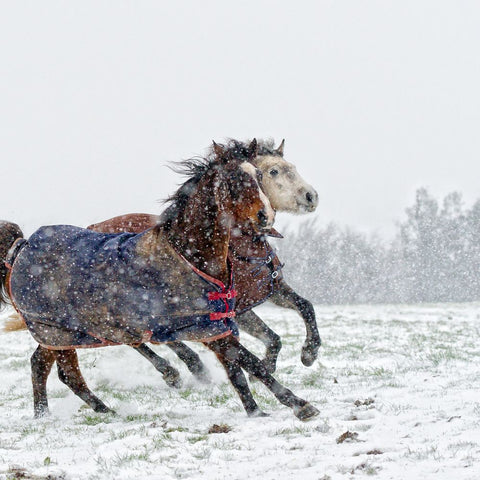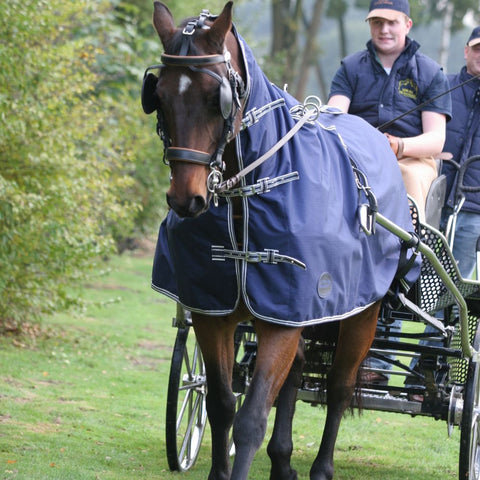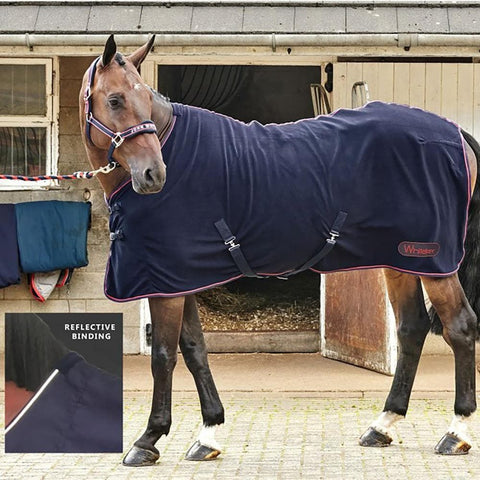The Complete Winter Rug Wardrobe – What Does It Look Like?
Wait, is a rug wardrobe ever really complete? Not if, like many equestrians, you have a slightly problematic addiction to buying new ones.
But if we pretend for a minute that that isn’t a ‘thing’ then, yes – we can make sure our four-legged friends have an outfit for every occasion this winter, without breaking the bank.
In this guide:
- What’s in Your Horse’s Wardrobe?
- The Dreaded Decision-Making
- What is the Thermoneutral Zone?
- In the Stable - Stable Rugs
- In the Field - Turnout Rugs
- On the Go - Exercise Sheets
- On the Move - Travel Rugs
What’s in Your Horse’s Wardrobe?
Essentially, there are four or five instances you may need to throw on a rug: for the stable, the field, for exercise, cooling down or travelling.
The biggest equestrian headache of them all tends to come with the selection of stable and, in particular, field rugs. Nevertheless, your choice of these will depend on a few different factors:
- How/if your horse is clipped
- Their breed/type
- Age
- Body condition
- Access to forage
- Shelter availability
- Weather and temperature
The Dreaded Decision-Making
Taking the above into account will help make a sensible decision about which rug to use, or whether one is even necessary. An unclipped native breed with access to food and shelter will fare well in most situations; but if they are elderly or cold and driving rain is headed their way, even these hardy types may appreciate something lightweight to keep the rain and wind off their backs.
Likewise, let’s not overlook the fact that stables restrict movement. So, whilst a horse may be inside out of wind, rain or snow, not being able to move around to generate heat when the air temperature has plummeted means a stable rug is likely necessary on a clipped horse, particularly finer types, those with poorer body condition or older/very young horses. Ensuring all horses and ponies have plenty of ad lib forage is also key to their warmth.

Horses versus Humans: the Thermoneutral Zone
In recent years, vets have cited over-rugging to be a man-made welfare issue. A horse’s ‘thermoneutral zone’ extends from around 5 degrees to 25 degrees Celsius. This means that until the air temperature gets under or over that range, horses are unlikely to really feel the cold or begin to sweat. In contrast, your own thermoneutral zone is roughly 25-30 degrees Celsius. So horses are more likely to suffer the effects of being too hot way more easily than us, and will not feel the cold anywhere near as quickly.
As a rough guide, horses probably don’t need any rug due to cold weather until temperatures drop to 10 degrees or below - but all horses are individuals and should be treated as such. Other exceptions include the desire to keep them dry in rainy but mild weather.

The Wardrobe
In the stable…
A stable fleece or lightweight rug for during the day or an unseasonably mild autumn night is a handy part of your horse or pony’s wardrobe. Two of your winter staples, however, will be a good quality mediumweight stable rug and, if you don’t want/need to splash out on a 300-450g heavyweight, you may also want to invest in an under rug, so you can layer up your mediumweight only when necessary and with a purpose-made item that won’t stretch, rub or slip. Always check that layering rugs does not cause the outer rug to become too tight.
Rugs with detachable necks also make for a more versatile option – particularly for horses with clipped necks, like the Whitaker Stable Rug Rastrick Combo.

In the field…
It’s a good idea to have a light, medium and heavyweight option at hand for winter turnout. Lightweights will keep your horse dry on milder but rainy days, or the chill off on dry, crisper days, such as this 100g Whitaker Thistle Turnout Rug.
A mediumweight is likely to be your go-to on most days, so it’s a good idea to invest in a good quality one, such as the Whitaker Deatch-A-Neck Seacroft Turnout Rug, which as the name suggests can be used with or without the neck cover. For freezing and sub-zero days, opt for a heavyweight rug like the Zilco Defender Heavy Combo Turnout Rug.

On the go…
Fewer horses will need rug protection while they are exercising, however, some may benefit from an exercise fleece, even just to warm up or hack out in on freezing days. There are plenty of waterproof options on the market too. For the most rain-averse amongst you, try the Whitaker Rothwell Roll-Up Rain Sheet.
For driving on chilly days, a fleece rug like the Ideal Fleece Exercise Driving Rug is perfect as it is designed to fit well over your harness. There is also a water resistant version for wet weather.

On the move…
Keep the cold at bay while travelling – and your horse dust free in the process – with a travel rug or fleece. One which doubles up as a cooler is a useful asset, like this Whitaker Rastrick Fleece Rug, allowing your horse to cool down and dry without catching a chill.





Leave a comment